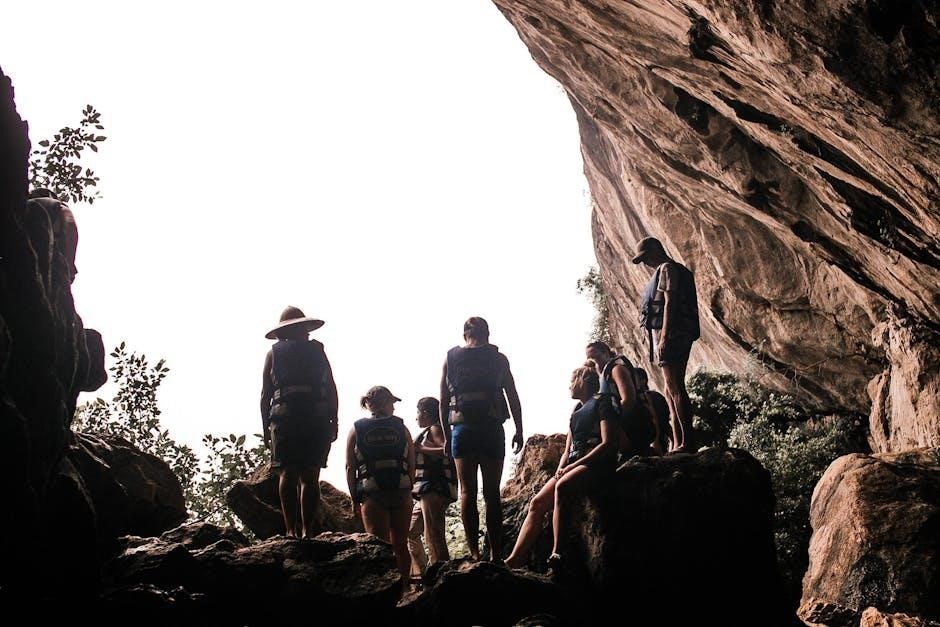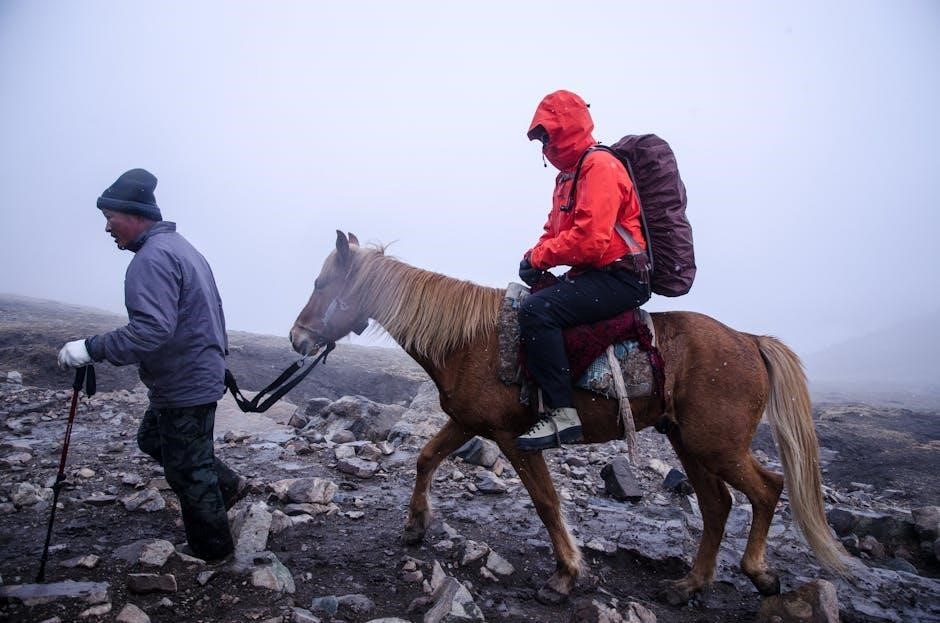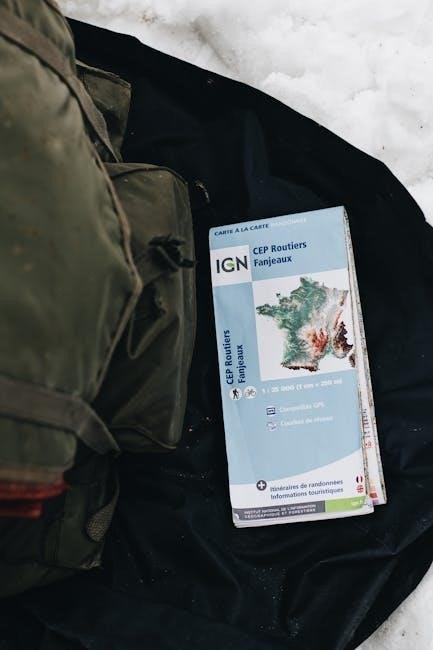Measuring Torso Length for Backpack Sizing
Measure your torso length by locating the C7 vertebra at the base of your neck and measuring to the top of your hip bone (iliac crest). This ensures proper backpack fit and comfort during use.
1.1 How to Accurately Measure Your Torso
To measure your torso length, stand straight and locate the C7 vertebra at the base of your neck. Measure down to the top of your hip bone (iliac crest) using a flexible tape measure. Keep shoulders relaxed and ensure the tape is level for an accurate fit. This measurement is crucial for selecting the right backpack size, as it determines how the pack will sit on your body during use.
1.2 Importance of Proper Torso Measurement for Backpack Fit
Proper torso measurement ensures the backpack sits correctly, distributing weight evenly between shoulders and hips. A ill-fitting pack can cause discomfort, poor posture, or back strain. Accurate measurement guarantees optimal comfort and performance, whether for hiking or daily use, by aligning the backpack’s suspension system with your body’s natural structure.

Understanding Standard Backpack Sizes
Standard backpack sizes are categorized into Small, Medium, and Large, each designed to fit different torso lengths and capacities. Proper sizing ensures optimal comfort and utility, avoiding both restrictive fits and unnecessary bulk. Understanding these sizes helps in selecting a pack that aligns with your needs, whether for hiking, school, or travel, ensuring efficient weight distribution and ease of use.
2.1 Common Backpack Size Categories (Small, Medium, Large)
Backpacks are typically categorized into Small, Medium, and Large sizes. Small backpacks suit shorter torsos (14–16 inches), ideal for younger users or day trips. Medium backpacks (16–18 inches) are versatile for average torso lengths and multi-day hikes. Large backpacks (18–22 inches) accommodate taller users or extended trips. Each size ensures proper weight distribution and comfort, while capacity varies to meet specific needs, whether for school, commuting, or backpacking adventures. Proper sizing enhances overall functionality and user experience.
2.2 Typical Capacity Ranges for Each Size
Backpack capacities vary by size, with Small backpacks typically ranging from 20–30 liters, suitable for day trips or school use. Medium backpacks generally offer 30–45 liters, ideal for multi-day hikes or extended commutes. Large backpacks range from 45–65 liters, designed for long trips or heavy loads. Capacities align with torso size, ensuring optimal weight distribution and packing efficiency, while catering to diverse user needs and activities.

Backpack Size by Body Type
Backpack sizing varies based on body type, ensuring proper fit and comfort. Torso length, hip size, and overall frame shape dictate the ideal backpack size for individuals.
3.1 How Body Type Affects Backpack Fit
Different body types influence backpack fit significantly. Taller individuals may require longer torsos, while shorter users need shorter packs. Hip size also plays a role, as it affects how the hip belt fits and distributes weight. Slender frames may need narrower shoulder straps, whereas broader shoulders require wider straps for comfort and proper load distribution. Ensuring the backpack matches your body proportions is crucial for optimal comfort and functionality during extended use.
3.2 Recommended Sizes for Different Body Types
Backpack sizes vary to accommodate different body types. Petite frames (under 5’2″) often fit well in small sizes, while medium sizes suit average builds (5’2″-5’8″). Taller individuals (over 5’8″) typically require large backpacks. Slender users may prefer narrower shoulder straps, whereas broader shoulders benefit from wider straps. Hip belt adjustability is crucial for proper weight distribution, ensuring comfort across all body types and activities. Proper fit enhances overall carrying efficiency and user satisfaction.

Choosing the Right Backpack Size for Activities
Selecting the right backpack size depends on the activity. Hiking and backpacking require larger capacities (30-50L), while school or daily commutes suit smaller sizes (15-25L) for lightweight essentials.
4.1 Hiking and Backpacking
For hiking and backpacking, choose a backpack with a capacity of 30-50 liters, depending on the duration and type of trip. Measure your torso length accurately to ensure a proper fit. Pack essentials like lightweight gear, water, and food, distributing weight evenly. Avoid overloading to maintain comfort. Consider features like hip belts and load lifters for better weight distribution. Always check airline size restrictions if traveling with your backpack.
4.2 School and Daily Commute
For school and daily commuting, backpacks typically range between 20-30 liters. Look for padded compartments to protect laptops and tablets. Multiple pockets help organize items like stationery and water bottles. Opt for durable materials and reinforced stitching for long-term use. Ensure the backpack fits comfortably with padded shoulder straps and a supportive back panel. Avoid overloading to maintain comfort during daily use.

How to Adjust Your Backpack for Optimal Fit
Adjust shoulder straps to fit snugly without digging into shoulders. Tighten hip belt for weight distribution and secure the load lifters to pull the pack close to your back.
5;1 Adjusting Shoulder Straps
Adjust shoulder straps to ensure a snug fit without digging into your shoulders. Pull the straps tight to keep the backpack close to your body, distributing weight evenly. This ensures comfort and prevents strain during extended wear. Properly fitted straps promote good posture and balance, making your backpack feel lighter and more secure.
5.2 Fine-Tuning Hip Belt and Load Lifers
Tighten the hip belt to transfer weight to your hips, ensuring most of the load is supported by your stronger lower body. Adjust the load lifters to pull the pack closer to your back, improving balance. Proper tension prevents the backpack from swaying and relieves shoulder stress. These adjustments ensure optimal weight distribution, enhancing comfort and reducing fatigue during extended activities like hiking or commuting.
Backpack Weight Limits and Comfort
Backpacks should not exceed 20-25% of your body weight for comfort. Proper weight distribution and fitting ensure even load support, preventing strain and enhancing mobility during use.
6.1 Maximum Recommended Weight for Comfort
The maximum recommended weight for a backpack is 20-25% of your body weight. Exceeding this can cause discomfort and strain. For example, a 150-pound person should carry no more than 30-37.5 pounds. Properly fitting backpacks and even weight distribution are crucial for comfort. Torso length and hip belt adjustment also play a key role in managing load effectively. Excessive weight can lead to back pain and poor posture over time. Always prioritize a balanced load for optimal comfort during extended use.
6.2 Impact of Weight Distribution on Comfort
Proper weight distribution is crucial for backpack comfort. Heavy items should be placed close to your back and near the top for balance. Uneven distribution can strain shoulders and hips, leading to discomfort. Adjusting shoulder straps and hip belts ensures the load transfers evenly. A well-distributed backpack promotes good posture and reduces fatigue. Poor distribution can cause back pain and make walking difficult, especially on long hikes or commutes.

Packing Strategies Based on Backpack Size
Packing efficiently starts with essentials. Roll clothes to save space, use compression bags for bulky items, and organize gear by necessity. Maximize compartments wisely.
7.1 Maximizing Capacity Without Overloading
To maximize your backpack’s capacity without overloading, start by rolling your clothes to save space and reduce wrinkles. Utilize compression bags for bulky items like jackets or blankets, which can help shrink their size. Distribute heavier items, such as laptops or water bottles, toward the bottom and closer to your back to maintain balance and comfort. Keep frequently used items in easy-to-access pockets to avoid digging through your entire pack. Avoid overstuffing by leaving a small buffer for souvenirs or unexpected items. Organize your gear into categories (e.g., electronics, clothing, toiletries) and use smaller pouches or organizers to keep everything tidy. This approach ensures you make the most of your backpack’s space while keeping it lightweight and manageable for your adventures.
7.2 Essential Items for Different Backpack Sizes
- For small backpacks (10-20L), pack essentials like a laptop, water bottle, snacks, and small toiletries.
- Medium backpacks (20-30L) can hold a change of clothes, a book, and a lightweight jacket.
- Larger backpacks (30L+) are ideal for multi-day trips, fitting sleeping bags, extra clothing, and bulkier gear like hiking boots.
The Importance of Proper Fit for Comfort and Health
Proper backpack fit prevents back strain, ensures good posture, and enhances comfort. A well-fitted backpack distributes weight evenly, reducing the risk of long-term health issues.
8.1 Avoiding Back Strain
Proper backpack fit is crucial to avoid back strain. Ensure the Torah length matches your body, and shoulder straps are snug but not tight. The hip belt should sit comfortably on your hips, distributing weight evenly. Overloading the backpack can lead to muscle fatigue and strain. Adjusting the load lifters helps maintain proper posture, reducing pressure on your lower back. Regularly checking the fit and weight distribution is essential for long-term comfort and health.
8.2 Ensuring Good Posture
A well-fitted backpack supports proper posture by distributing weight evenly across your shoulders and hips. Ensure the shoulder straps are snug but not restrictive, and the hip belt rests on your iliac crest. This prevents slouching and reduces pressure on your spine. Maintaining good posture while wearing a backpack reduces muscle fatigue and discomfort, promoting long-term spinal health and comfort during extended use.

Backpack Size Trends and Innovations
Modern backpacks feature adjustable torso systems and smart fit technologies, ensuring optimal fit. Sustainable materials and innovative designs are revolutionizing backpack sizing for enhanced comfort and functionality.
9.1 Current Trends in Backpack Design
Current trends in backpack design emphasize adjustable torso systems, sustainable materials, and innovative features like customizable compartments. Brands are incorporating smart technology, such as load-monitoring sensors, to enhance user experience. Eco-friendly fabrics and minimalist aesthetics are gaining popularity, catering to both functionality and style; These designs aim to provide optimal fit, comfort, and versatility for various activities, ensuring backpacks meet diverse user needs while maintaining durability and modern appeal.
9.2 Future of Backpack Sizing Technology
The future of backpack sizing technology lies in AI-driven solutions and augmented reality fittings. Innovations like 3D scanning will provide precise torso measurements, ensuring a perfect fit. Smart materials and adaptive frames will adjust to the user’s body in real-time, enhancing comfort and load distribution. These advancements aim to merge technology with sustainability, offering eco-friendly options while maintaining durability and functionality, ensuring backpacks evolve to meet future demands for personalization and efficiency.
